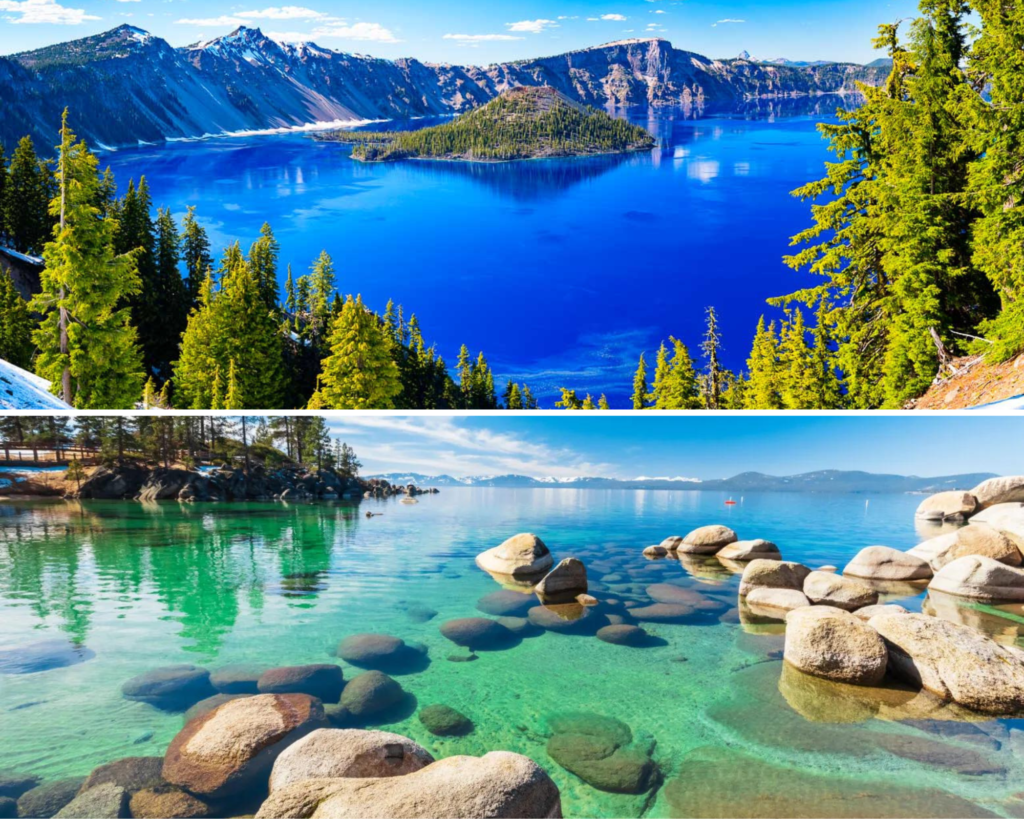Introduction:
In “Scenic Splendor: America’s Hidden Natural Gems,” readers embark on an extraordinary journey to uncover the stunning yet lesser-known landscapes that dot the American landscape. While major landmarks like the Grand Canyon and Yosemite National Park are celebrated for their grandeur, this book shines a spotlight on those hidden treasures that offer equally mesmerizing experiences but often remain under the radar of mainstream tourism. Through detailed descriptions, stunning visuals, and practical advice, this book aims to inspire wanderlust and a deeper appreciation for the serene beauty that lies off the beaten path.
1. The Enchanted Forests:
Great Smoky Mountains, Tennessee/North Carolina:
- Overview: The Great Smoky Mountains are renowned for their rich biodiversity and mystical, mist-covered peaks. This chapter delves into the lush landscapes and ancient trees that define the Smokies.
- Highlights:
- Clingmans Dome: The highest point in the park offers panoramic views of the surrounding misty valleys.
- Cades Cove: A picturesque valley with historical buildings, wildlife sightings, and serene walking trails.
- Roaring Fork Motor Nature Trail: A scenic drive through dense forests and historic log cabins.
Hoh Rain Forest, Washington:
- Overview: Part of Olympic National Park, the Hoh Rain Forest is one of the few temperate rainforests in the U.S., characterized by its vibrant greenery and moss-draped trees.
- Highlights:
- Hall of Mosses Trail: A short loop through an enchanting forest of moss-covered trees and lush undergrowth.
- Spruce Nature Trail: A slightly longer trail that offers diverse views of the rainforest ecosystem.
- Wildlife: Look out for Roosevelt elk, black bears, and various bird species.

2. The Hidden Canyons:
Antelope Canyon, Arizona:
- Overview: Known for its surreal beauty, Antelope Canyon is a slot canyon renowned for its flowing rock formations and light beams.
- Highlights:
- Upper Antelope Canyon: Famous for its light beams that shine through the narrow canyon walls, creating a mesmerizing effect.
- Lower Antelope Canyon: Features more winding passages and intricate rock patterns.
- Photography Tips: Best times to visit for optimal light conditions and how to capture the canyon’s stunning features.
Little Wild Horse Canyon, Utah:
- Overview: A hidden slot canyon in the San Rafael Swell known for its narrow, winding passages and striking rock formations.
- Highlights:
- Slot Canyon Exploration: Navigate through tight, serpentine corridors with vibrant red and orange rock hues.
- Scenic Views: The canyon’s contrasting light and shadow create dramatic photographic opportunities.
- Hiking Tips: Best times to visit and essential gear for exploring this rugged terrain.

3. The Unspoiled Coasts:
Oregon Dunes National Recreation Area:
- Overview: A vast and varied coastal landscape featuring dramatic sand dunes, coastal forests, and freshwater lakes.
- Highlights:
- Dune Trails: Explore trails that wind through expansive dunes and offer sweeping views of the coastline.
- Florence’s Sand Dunes: A hotspot for sandboarding and off-road vehicle enthusiasts.
- Lake and Forest Areas: Discover tranquil lakes and lush forested areas that provide a contrast to the arid dunes.
Cumberland Island, Georgia:
- Overview: A remote barrier island with pristine beaches, rich history, and diverse wildlife.
- Highlights:
- Wild Horses: Encounter the island’s free-roaming horses and other wildlife.
- Historic Ruins: Explore the remains of the Carnegie family’s mansion and other historical sites.
- Beachfront: Enjoy secluded, untouched beaches ideal for quiet relaxation.

4. The Serene Lakes:
Crater Lake, Oregon:
- Overview: The deepest lake in the U.S., formed within the caldera of a dormant volcano, known for its stunning blue color and clarity.
- Highlights:
- Rim Drive: A scenic drive around the lake offering panoramic views.
- Wizard Island: A volcanic cinder cone in the lake’s center with hiking opportunities.
- Winter Sports: Opportunities for snowshoeing and cross-country skiing in the winter months.
Lake Tahoe, California/Nevada:
- Overview: A large alpine lake known for its clear waters and surrounding mountains, offering a range of recreational activities.
- Highlights:
- Emerald Bay: A picturesque bay with a historic castle and beautiful views.
- Sand Harbor: A popular spot for swimming and kayaking with clear, turquoise waters.
- Scenic Hikes: Trails that offer stunning lake views and opportunities to explore the surrounding wilderness.

5. The Majestic Mountains:
Sawtooth Wilderness, Idaho:
- Overview: A remote and rugged area known for its jagged peaks, alpine lakes, and pristine wilderness.
- Highlights:
- Sawtooth Range: A collection of sharp, dramatic peaks ideal for hiking and climbing.
- Redfish Lake: A scenic lake surrounded by mountains with opportunities for fishing and boating.
- Hiking Trails: Routes that offer varying levels of difficulty and stunning views of the wilderness.
San Juan Mountains, Colorado:
- Overview: A less-travelled mountain range characterized by its colorful aspen groves, high-altitude lakes, and rugged terrain.
- Highlights:
- Telluride: A charming mountain town with access to stunning alpine scenery and outdoor activities.
- Colorado Trail: A long-distance trail that passes through some of the most scenic parts of the San Juan Mountains.
- Alpine Lakes: Explore high-altitude lakes like Lake San Cristobal and Ice Lake Basin.

6. The Quiet Deserts:
Death Valley National Park, California:
- Overview: A desert landscape known for its extreme conditions, with surprising natural beauty in its salt flats, sand dunes, and rugged terrain.
- Highlights:
- Badwater Basin: The lowest point in North America with vast salt flats and unique geological features.
- Mesquite Flat Sand Dunes: Expansive sand dunes ideal for photography and desert exploration.
- Golden Canyon: A colorful canyon offering a relatively easy hike with stunning views.
Big Bend National Park, Texas:
- Overview: A remote desert park with dramatic canyons, river views, and unique geological formations.
- Highlights:
- Chisos Mountains: A rugged mountain range offering hiking and panoramic views of the desert.
- Rio Grande River: Explore the river’s scenic canyons and enjoy activities like rafting and canoeing.
- The Window: A popular hiking trail with a dramatic rock formation framing stunning desert vistas.

7. The Isolated Islands:
Channel Islands National Park, California:
- Overview: A remote archipelago off the coast of Southern California, known for its unique flora, fauna, and rugged coastal landscapes.
- Highlights:
- Santa Cruz Island: The largest island, offering a range of hiking trails and wildlife viewing opportunities.
- Anacapa Island: Famous for its striking sea caves and lighthouse.
- Marine Life: Opportunities to see dolphins, sea lions, and other marine creatures.
Isle Royale National Park, Michigan:
- Overview: A remote island wilderness in Lake Superior, known for its rugged terrain, diverse wildlife, and solitude.
- Highlights:
- Wolf-Moose Ecology: Observe the dynamic relationship between wolves and moose on the island.
- Rugged Trails: Hiking trails that offer solitude and pristine natural beauty.
- Historic Sites: Explore historic lighthouses and mining ruins.

Conclusion:
“Scenic Splendor: America’s Hidden Natural Gems” serves as an invitation to explore the lesser-known but equally captivating corners of the American landscape. This book aims to guide readers through serene, unspoiled environments that offer a respite from the hustle and bustle of mainstream destinations. Each chapter provides detailed descriptions, practical travel tips, and evocative photography to help readers discover and appreciate these hidden gems.



